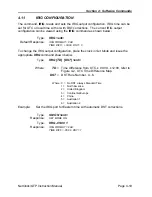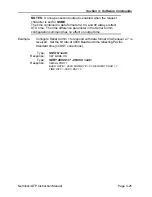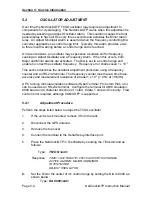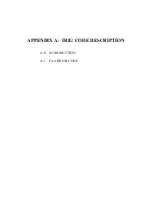
Section 4: Software Commands
Page 4-24
NetClock/GTP Instruction Manual
4.16
SERIAL COMM CONFIGURATION
The commands,
SER1
and
SER2
, read or set the configuration of the Serial Comm
outputs. Serial Comm configuration options include baud rate, data format, request
character, UTC or local time with or without DST corrections.
To view the current Serial Comm configurations issue the
SERx
command as shown
below:
Type:
SERX <ent>
Default Response:
SERIAL PORT x
BAUD RATE = 9600 FORMAT# = 00 REQUEST CHAR = T
TIME DIFF = +00:00 DST = 0
Where:
X
= Serial Comm Number 1, 2
To change a Serial Comm port configuration, place the clock in
Set Mode
and issue the
SERx
command as follows:
Type:
SERX [BAUD] [FMT] [REQ] [TD] [DST] <ent>
Where:
X
= Serial Comm Number 1,2
BAUD
= Baud Rate: 1200, 2400, 4800, 9600
FMT
= Data Format: 00, 01, 02, 03, 04, 90: Refer to Section
3.3 for a complete description of the data formats
available.
REQ
= Request Character. Any symbol, number or
uppercase letter can be configured as the request
character. The Serial Comm port will output the
selected data format upon receiving this character.
The Serial Comm port can also be configured to output
continuously once-per-second by typing the word
NONE
as the request character.
TD
= Time Difference from UTC, ±00:00...±12:00; Refer to
Figure 4-2, UTC Time Difference Map.
DST
= DST rule number, 0...6.
Where: 0 = No DST, always Standard Time
1 = North America
2 = United Kingdom
3 = Continental Europe
4 = China
5 = Australian 1
6 = Australian 2






























